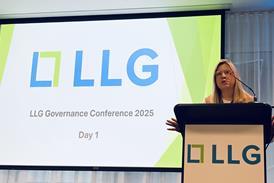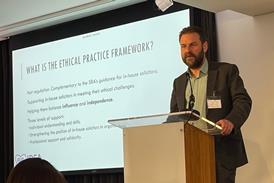Andrew and the Marvellous Analytical Engine
Andrew Hogan
£19.99, the Labrador Press
★★★★★
When you think about it, civilisation really has not been around all that long. The Ice Age ended a mere 12,000 years ago, and what we call ‘civilisation’ was based on a series of embedded technologies: discoveries so transformative they changed the direction of history. Fire, agriculture, bronze and iron; then the printing press, then electricity. Historians point to around two dozen such inflection points. But now these are arriving faster, each wave of innovation breaking more quickly on the last.
The latest, of course, is artificial intelligence. But what are lawyers to make of it? The problem is not a lack of information about AI, but a glut of it. There is too much being written about it, yet too little that is digestible. That is where Andrew Hogan’s new book comes in. Hogan, a barrister in his early 50s, has spent the past year learning about AI, experimenting with different systems, and channelling this knowledge into a practical, compact guide designed for lawyers of a ‘certain age’, explaining precisely what they need to know about AI, and how they can actually use it.

So what does the book cover? Chapters range from a brief history of computers and programming, to AI in legal practice, the ethics of AI, and regulatory concerns. Avoiding the hype, Hogan’s approach focuses on the everyday legal problems AI can address. For example, in catastrophic injury litigation, predictive analytics can analyse medical evidence, previous settlements and economic data to produce valuations in hours rather than months, potentially enabling insurers to make offers much earlier, in a way that is consistent and transparent. In credit hire, AI has turned selective sampling into market-wide analysis, drawing on millions of data points to produce robust, contemporaneous benchmarks.
Meanwhile, AI also brings new risks: with deepfakes challenging the reliability of digital evidence and requiring new forensic tools and provenance checks, for example. AI is also reshaping professional standards: negligence may arise both from over-reliance on flawed AI and from failure to use it when it would enhance competence. Across research, administration, fact management and transcription, AI promises speed and efficiency, but also demands verification, oversight and ethical vigilance. The challenge for lawyers is to harness these tools responsibly, while adapting business models and professional duties.
Overall, Hogan’s book is a thoughtful and informative guide to AI that will no doubt prove an invaluable handbook for all lawyers – not just those in the middle-aged bracket.
Rachel Rothwell is editor of Gazette sister magazine Litigation Funding, the essential guide to finance and costs. For subscription details, tel: 020 8049 3890































No comments yet